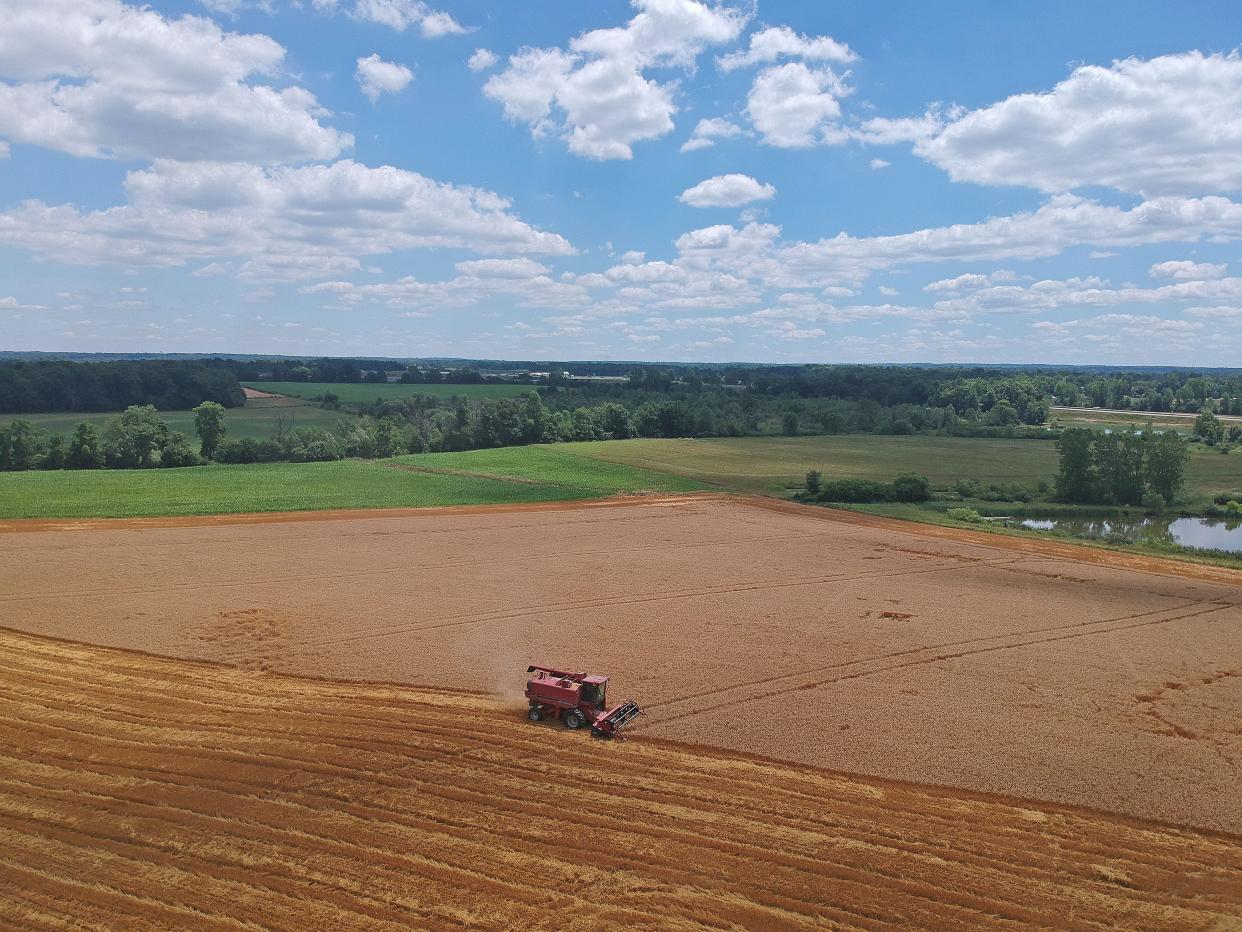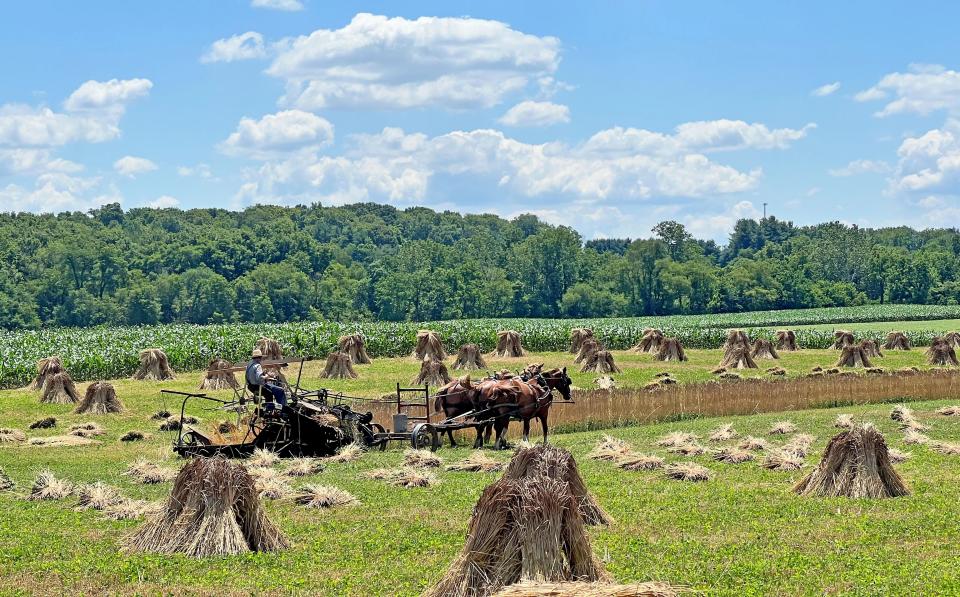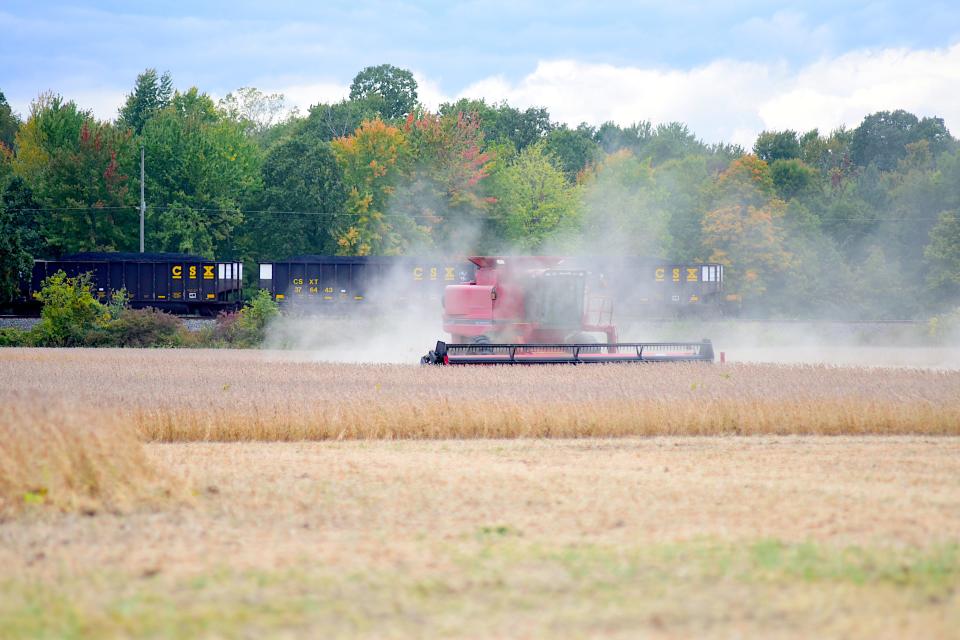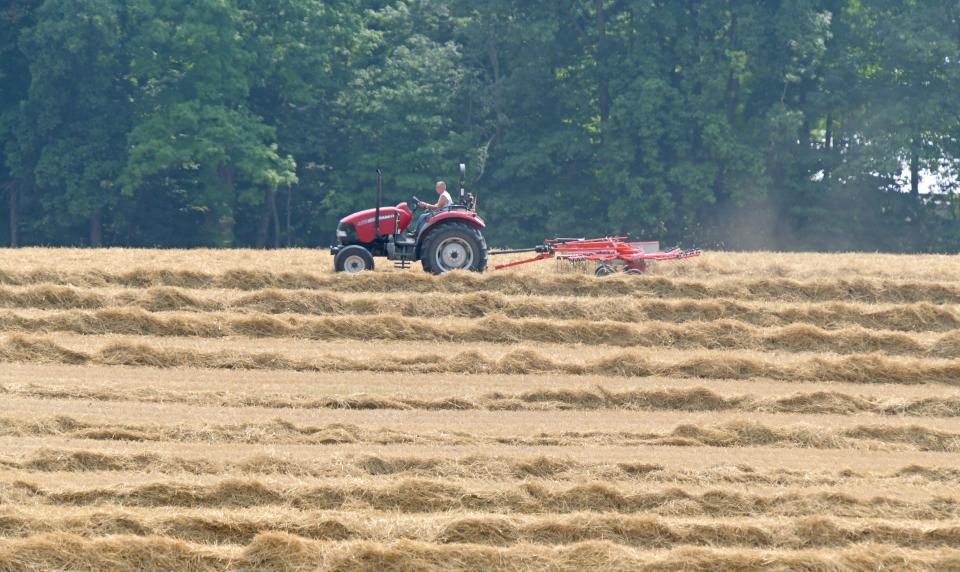'Farmers have a lot on their plate': Global challenges add up for Ohio's grain producers

Ohio's grain harvest may be wrapping up, but many farmers will be dealing with the effects of the global agriculture market for several more months.
Prices throughout the Midwest are altered by events that have taken place on nearly every continent, explained Wendy Osborn, director of market development for Ohio Corn & Wheat.
"Farmers have a lot on their plate to think about," she said. "A good understanding of what's going on in the world market is really important so that they can use the information that they have at hand to make their best estimates and put their marketing plan together."
Russia exporting more wheat than Ukraine this year
The foreign market that's been in the news most this year has been Ukraine.
In August, the Associated Press reported that Russia had pulled out of a deal that the U.N. and Turkey had brokered to provide protection for ships carrying Ukrainian grain through the Black Sea.
"It has been a concern to not only the United States, but the whole world," Osborn said. "So much is exported out of there, specifically for wheat production. They do feed a lot of countries."

This year, though, it appears that Russian grain is replacing the Ukrainian harvest.
"Russia has been the largest producer of wheat," Osborn said. "They're the number one exporter. Ukraine's exports were slightly down."
Australia and the European Union are other major exporters of wheat. China grows a lot, but uses so much domestically that it's an importer nation. Despite the prevalence of those farmers, their actions can do little to offset Russia's.
"I think most people don't recognize that Russia produced such a large crop and actually flooded the market," Osborn said. "Prices have been challenged because there's such a plentiful supply across the world, because Russia has a lot of wheat available for sale."
US farmers grow 6 classes of wheat
Although there's a lot of competition in the global wheat supply, Ohio farmers have discovered something of a niche market.
"The United States is kind of unique because we grow six classes of wheat," Osborn said. "Here in Ohio, we actually grow soft red winter wheat, which is usually used for cakes and cookies
The climate from Ohio southward to the Mississippi Valley is prime territory for the high-yielding confectionary wheat.

"Out west and in several other countries like Russia, they would actually grow a harder type of wheat that would usually be used for pasta and bread," Osborn said. "We do have a lot of competition, usually, with Canada, because they also grow a softer wheat."
Ohio farmers harvested more acres of soft red winter wheat this summer than they did during any of the previous nine years.
"We're having pretty good exports and this coming year looks pretty optimistic," Osborn said. "In Ohio specifically, our three largest buyers of soft red winter wheat are Colombia, Mexico and China."
Excellent yields force commodity prices to drop
Farmers across the Buckeye State have been reporting healthy harvest results all year, including wheat, soybeans and corn.
"We anticipate with corn that we will have record yields for Ohio," Osborn said. "We're going to have a lot of supply of corn available."
When markets become flooded — whether the excess is from home or abroad — commodity prices drop. Prices per bushel have been down in Ohio all year for all crops.

"But in the U.S., we have a really plentiful supply of corn," Osborn said. "We're just looking for ways and opportunities to get that marketed. If we can look at the optimistic viewpoint for that, is that that does make it more attractive for our buyers across the world."
Low water levels this year along the Mississippi River are keeping a large portion of Midwestern grain from being shipped to New Orleans for export. Since the market is at the port, the farmers are losing out.
"We've had challenges getting barges," Osborn said. "The barge rate has been really expensive."
Grains that do make it to the high seas suddenly have a new problem: currency conversions.
"We've had a really strong dollar here in the United States," Osborn said. "That's made our grain a little bit more expensive."
'It's really hard to say what the price will be'
American farmers have been marketing their grain throughout the world this year.
"In Ohio, the three big places that corn goes to is ethanol production, feed for livestock and then exports," Osborn said.
Individually, growers can lock into futures prices, sell for the going rate, or store their grain and hope for market prices to increase.
"There are a lot of farmers that are storing their corn and will market it later," Osborn said. "Most will market it between now and the next harvest season."
Those who need the cash flow might sell sooner than those who have financial reserves. And those who are paying storage fees will let go of their supply more quickly than those who have ample grain bins of their own.
The right decision won't be clear until well after the fact.
"It really just depends," Osborn said. "It's really hard to say what the price will be in the next few months or in the summer."
ztuggle@gannett.com
419-564-3508
This article originally appeared on Mansfield News Journal: Ohio farmers had a record harvest but global prices are new challenge

